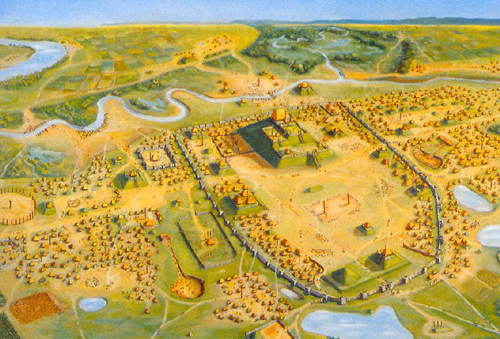Many (most?) advanced civilizations appeared along rivers. Mesopotamia was along the Tigris and Euphrates. Egypt was along the Nile. India was along the Indus. China was along the Yellow River. All of the empires in the Americas (Aztecs, Incas, and Mayans) were in Central and South America.
I know about the Mound Builders, but they never developed a civilization similar to Egypt or Babylonia/Assyria. As I understand it, they were a large group of independent tribes. A large empire never developed in the region. Why was that?
Edit
Some people mentioned that the title should be "Why didn't large empires develop along the Mississippi?" That is a better title, and that's what this thread is about.
I know about the Mound Builders, but they never developed a civilization similar to Egypt or Babylonia/Assyria. As I understand it, they were a large group of independent tribes. A large empire never developed in the region. Why was that?
Edit
Some people mentioned that the title should be "Why didn't large empires develop along the Mississippi?" That is a better title, and that's what this thread is about.
Last edited:

